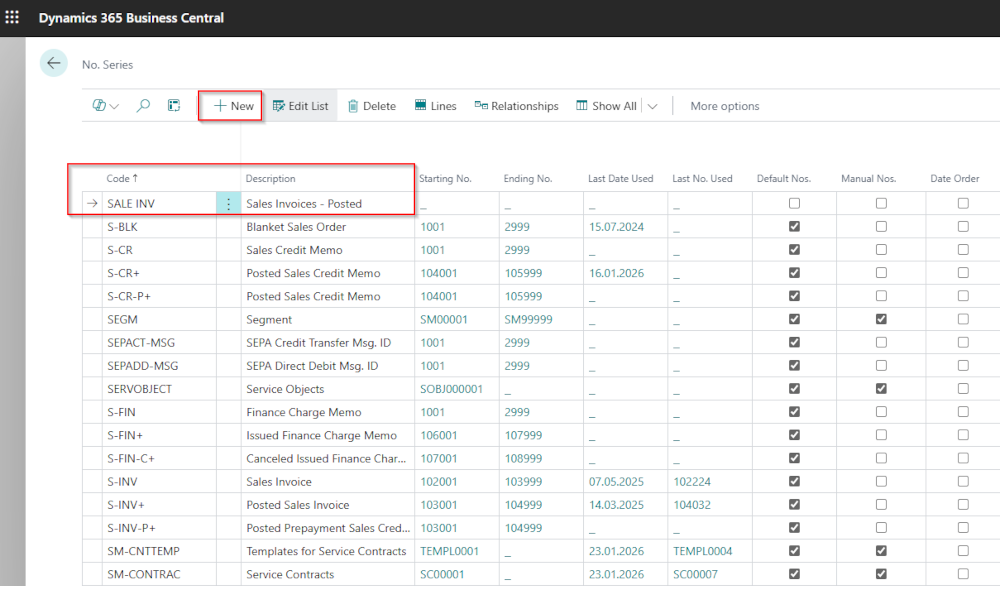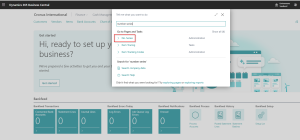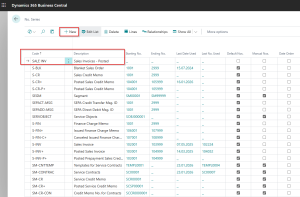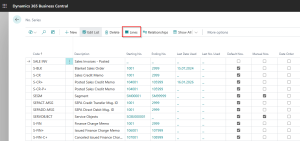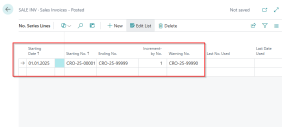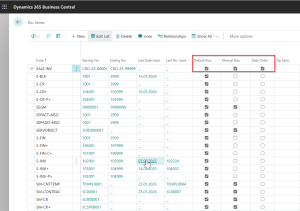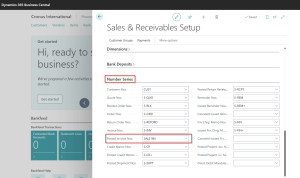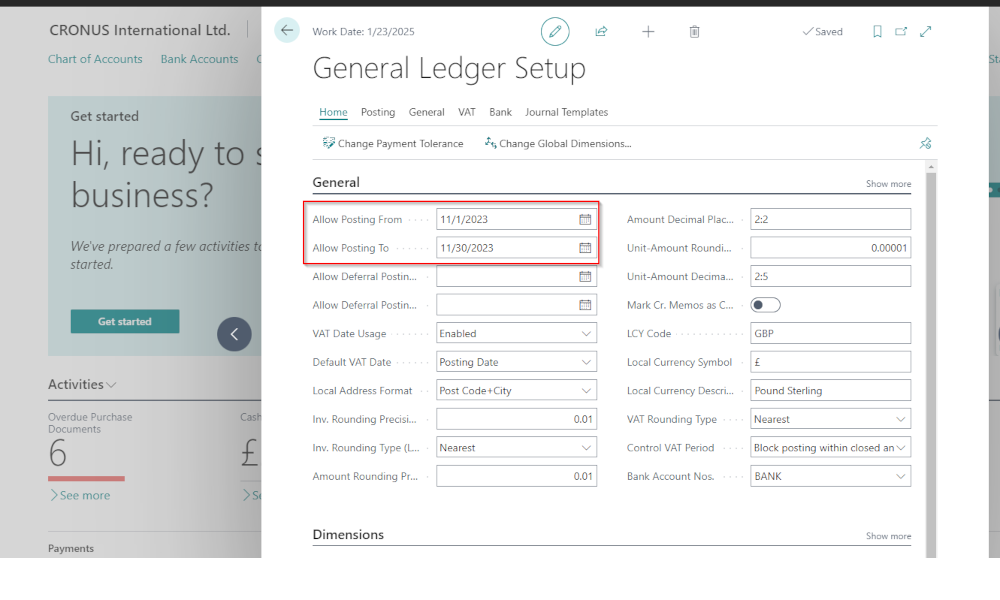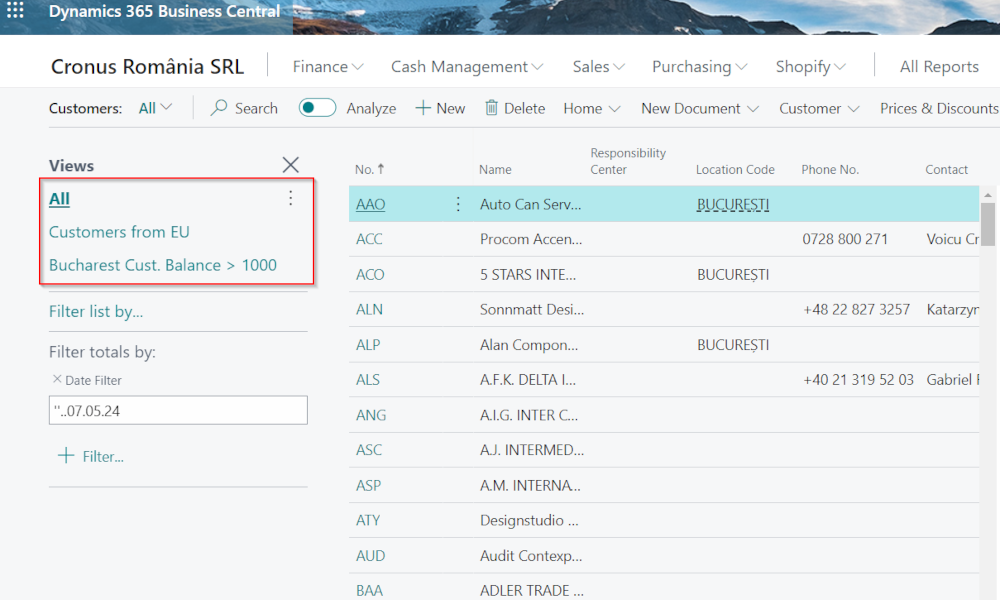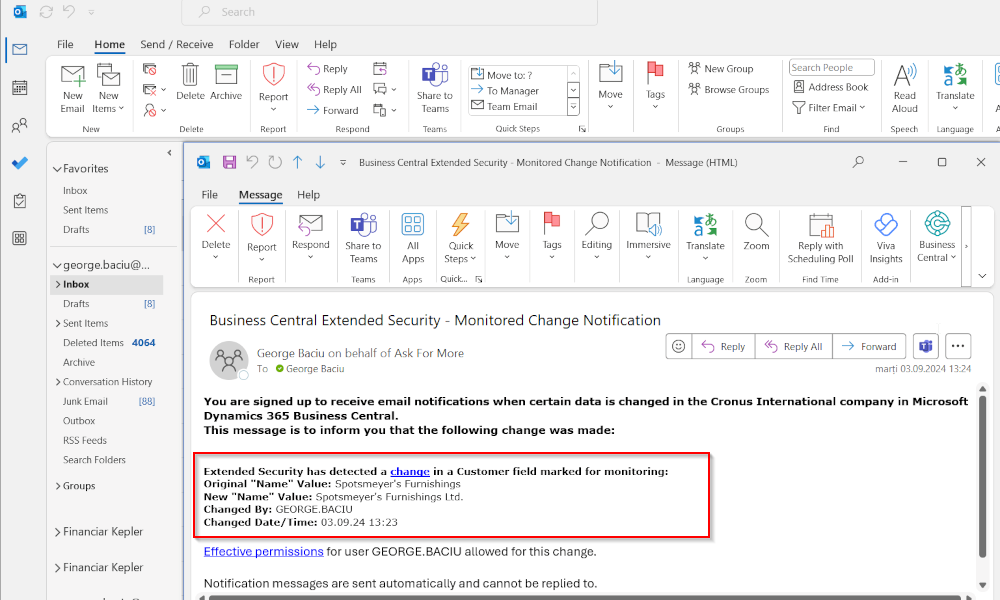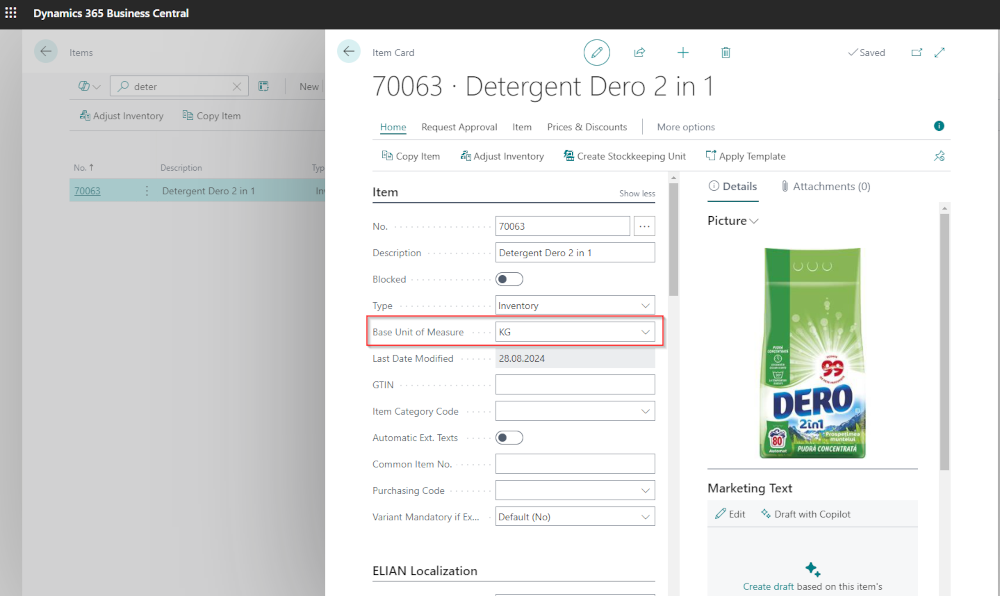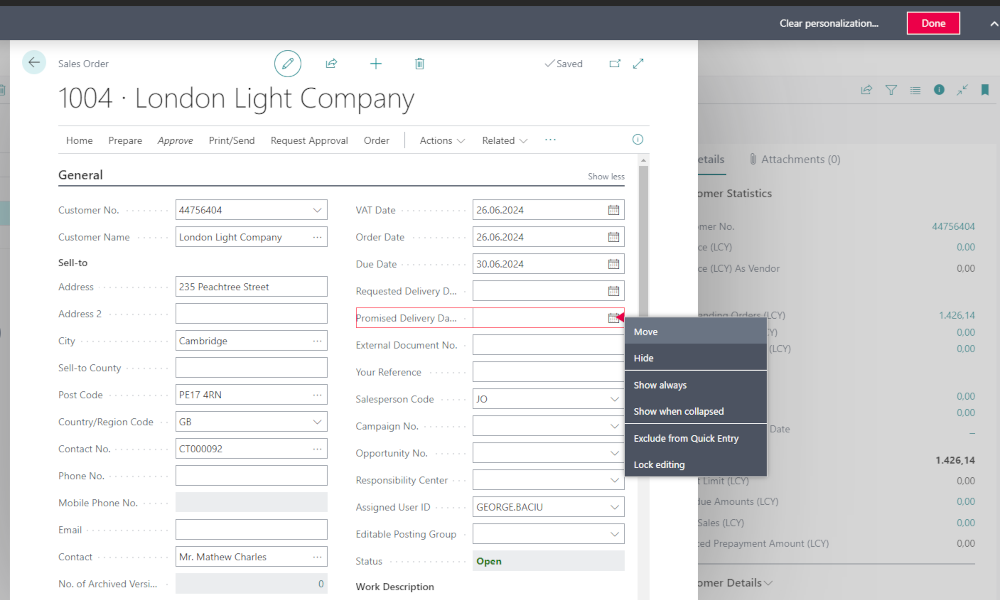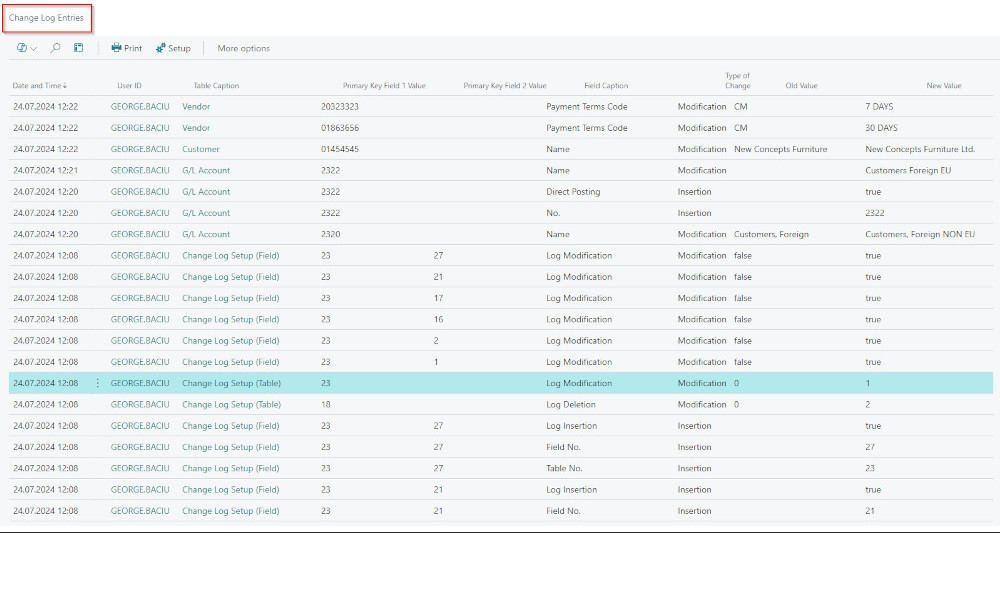The number series in the Dynamics 365 Business Central ERP system allow for the automatic assignment of numbers to both entities—such as customers, vendors, and items—and documents like invoices, receipts, and payments. This number series functionality ensures the uniqueness of entities and documents at the database level and allows you to configure various numbering policies.
Defining number series in Business Central should not be viewed as a purely technical activity, because the way we design our number series can assist (or hinder) us in processing and analyzing transactions in the system. Ideally, number series codes should be meaningful, communicating as much information as possible about the entity or document they are associated with.
Number series are defined on the “Number Series” page, which can be accessed most easily by using the “Search” function in Business Central.
Once you are on the “Number Series” page, to create a new number series, click the “New” button. This will create a blank line where you can enter a code and a description.
However, the actual definition of the number series itself is done on the “No. Series Lines” page. To access it, click the “Lines” button.
To define a number series, you need to configure the following fields:
- Starting Date – Enter this when you want the number series to be valid only during a specific period. For example, this is useful for sales invoice series that change annually.
- Starting No. – This is the initial number of the series. It usually includes an alphanumeric part and a counter that increments. In the example below, we’ve used “ELS-25-00001” as the starting number: ELS indicates the company name, 25 represents the year the invoice is posted, and 00001 is the numeric portion.
- Increment-by No. – This determines the increment value of the numbering. The default is “1,” but you can set a different increment if needed.
- Ending No. – This is the final number in the series.
- Warning No. – Here, you can enter a number at which Business Central will begin issuing warnings that the series is approaching its end.
After configuration, the number series will look similar to this:
Back on the “Number Series” page, you can configure several options that define how the number series behaves:
- Default Nos. – This option allows the system to automatically assign numbers using this series.
- Manual Nos. – This setting allows users to enter numbers manually. We recommend enabling this only for special cases.
- Date Order – This option enforces that numbers are assigned in chronological order based on the posting date. This is especially important for document-related series. For example, it doesn’t make sense to post Sales Invoice No. 100 on 15.01.2025 and then post Invoice No. 101 with a posting date of 14.01.2025.
Once your number series are defined, the final step is to specify where they will be used. This is done in the setup tables of each module, where you’ll find a section called “Number Series”. In the example below, we show how to assign a number series for sales invoices in the “Sales & Receivables Setup” page.
Elian Solutions is part of the Bittnet Group, active for over 15 years as an implementer of the Microsoft Dynamics 365 Business Central ERP system. With a team of over 70 employees and a portfolio of over 250 clients, Elian Solutions is one of the key Microsoft partners for ERP systems.

